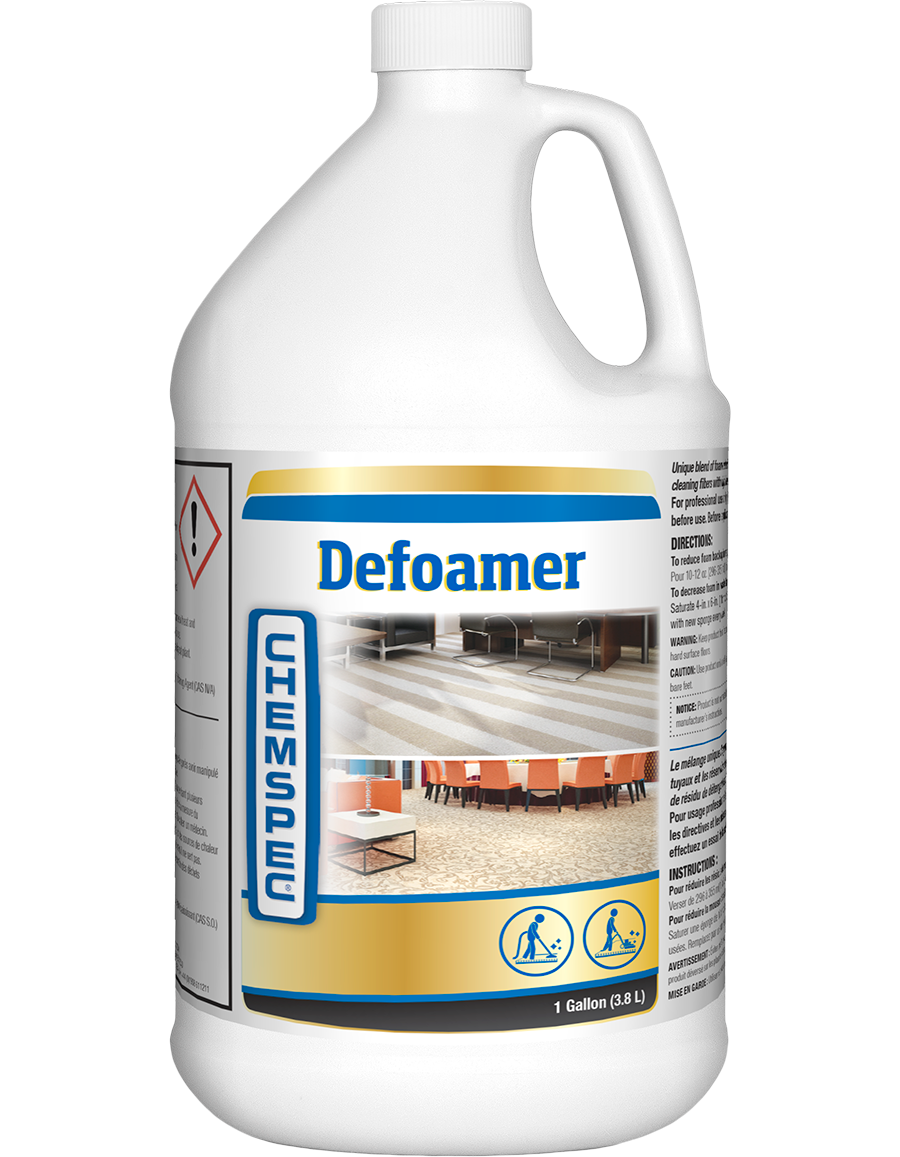How a Chemical Defoamer Can Improve Effectiveness in Your Procedures and Processes
In today's affordable industrial landscape, operational efficiency is paramount, and the duty of a chemical defoamer can not be forgotten. By resolving foam-related obstacles that interrupt processes, defoamers not only promote smoother procedures however likewise contribute to set you back financial savings and improved product quality.
Recognizing Chemical Defoamers
Chemical defoamers play a critical function in various commercial procedures by successfully decreasing and preventing foam formation. Foaming can bring about functional inefficiencies, increased manufacturing expenses, and compromised item quality. Defoamers are specialized chemical ingredients created to disrupt the security of foam bubbles, consequently enabling smoother handling and enhanced efficiency across several markets, including food and drink, pharmaceuticals, and wastewater treatment.

These representatives typically are composed of surfactants, oils, or polymeric compounds that reduced the surface area tension of the fluid, promoting the collapse of foam. The system through which defoamers operate often includes the destabilization of foam frameworks, permitting quicker water drainage of liquid and the launch of trapped air. Various solutions are tailored to details applications, taking into consideration aspects such as compatibility with the system, temperature, and the nature of the liquid being dealt with.
Understanding the structure and capability of chemical defoamers is important for picking the appropriate product for a provided application. By maximizing defoamer selection based on procedure requirements, industries can improve functional efficiency, reduce foam-related difficulties, and inevitably improve general efficiency.
Advantages of Making Use Of Defoamers
Utilizing defoamers can substantially boost functional efficiency across different markets by properly minimizing foam-related issues. The presence of foam can interrupt procedures, causing raised downtime, lowered productivity, and potential quality deterioration in final product. Defoamers assist deal with these obstacles by damaging down foam frameworks, therefore permitting for smoother procedures.
Among the key advantages of making use of defoamers is the decrease of waste and revamp. By decreasing foam development, defoamers boost the uniformity of procedures, making certain that products are utilized effectively. This not only lowers operational costs but also adds to sustainability campaigns by lowering source usage.
Furthermore, defoamers can enhance product quality. In manufacturing setups, extreme foam can cause variances in product characteristics, impacting consumer contentment. By regulating foam levels, defoamers help maintain the wanted physical properties of items.

Applications in Different Industries
The performance of defoamers extends across a check out this site broad variety of sectors, where their application addresses details foam-related challenges fundamental to every market. In the food and drink industry, defoamers are critical for enhancing manufacturing procedures, such as developing and dairy processing, where excessive foam can hinder circulation prices and minimize performance. By minimizing foam, these agents enhance product quality and consistency.
In the chemical manufacturing sector, defoamers are employed in processes like paint production and wastewater treatment. Below, they prevent foam development that can hinder blending and different stages, consequently boosting the general effectiveness and efficiency of operations.
In pharmaceuticals, defoamers play an important role in the formulation of liquid drugs, making certain correct dose and security by managing foam during mixing and storage space. (Chemical Defoamer)
In addition, in the farming industry, defoamers are utilized in pesticide solutions to improve application effectiveness and reduce waste.
Selecting the Right Defoamer
Picking the ideal defoamer is vital for accomplishing optimal performance in numerous applications. The choice process should start with a complete understanding of the particular issues handy, consisting of the kind of foam existing, the handling conditions, and the chemical compatibility with various other formula components.
Defoamers are created from a range of materials, consisting of silicone, mineral oils, and fatty acids. Recognizing the ideal composition is essential, as various materials show varying performance in varied environments. For example, silicone-based defoamers are typically favored in high-temperature applications because of their stability, while natural defoamers may be extra appropriate for water-based systems.
Furthermore, consider the defoamer's effect on the end product. Some solutions can alter the useful or aesthetic buildings, making it crucial to select a defoamer that satisfies item specifications without jeopardizing quality.
Checking is an additional vital action in selecting a defoamer. Small-scale tests can provide check these guys out useful understandings into the defoamer's performance, permitting adjustments before full-blown execution. By thoroughly examining these factors, companies can improve performance and ensure that the defoamer efficiently fulfills their functional needs.
Best Practices for Implementation
Applying a defoamer effectively needs cautious preparation and adherence to ideal practices to maximize its efficiency. Conduct a thorough assessment of the specific application and foam qualities. Comprehending the kind and source of foam will assist the option of one of the most suitable defoamer formulation.
Next, establish the optimal dosage (Chemical Defoamer). Begin with a small-scale trial to identify the minimum effective concentration, as excessive use can lead to adverse effects on product quality or functional performance
Surveillance and readjusting the application approach is critical; make certain that the defoamer is presented at the ideal factor in the process for maximum impact, such as during blending or quickly after foam development.

In addition, maintain clear communication with all pertinent employees to guarantee regular application techniques and to share insights on performance end results.
Verdict
In final thought, the use of chemical defoamers plays an essential duty in boosting functional effectiveness throughout diverse markets. Eventually, the incorporation of defoamers into industrial processes cultivates integrity and adds to total efficiency enhancement.

In the food and drink sector, defoamers are essential for enhancing manufacturing processes, such as brewing and dairy products handling, where excessive foam can hinder flow prices and lower efficiency. Silicone-based defoamers are typically preferred in high-temperature applications due to their security, while organic defoamers may be much more appropriate for water-based systems.